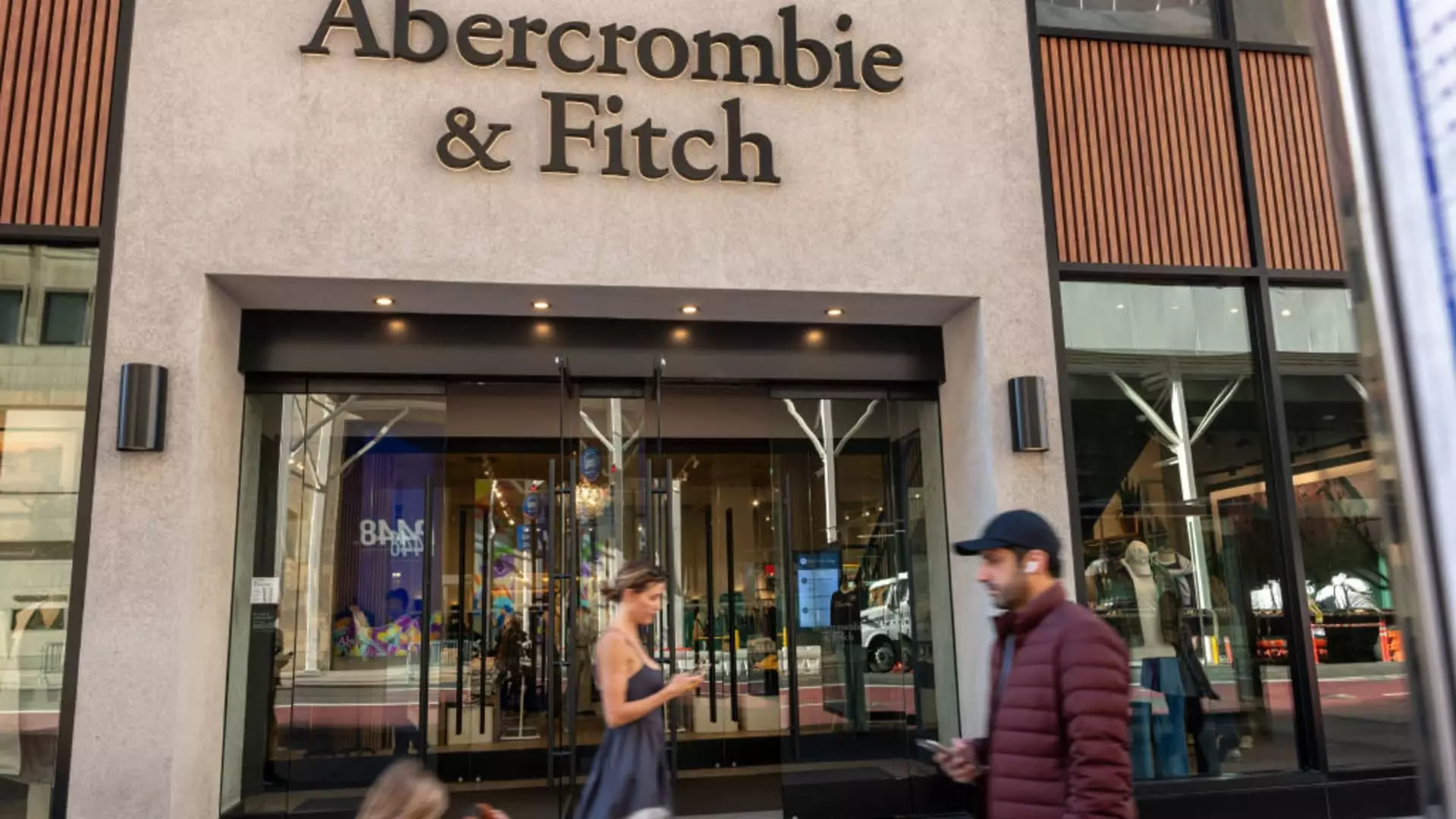Abercrombie & Fitch, once a staple of youth fashion, has demonstrated remarkable resilience in a challenging retail climate. Despite facing tumultuous events, including the arrest of former CEO Mike Jeffries over serious allegations, the company has managed to thrive, posting impressive financial results that exceeded market expectations. For the fiscal third quarter, Abercrombie reported earnings per share of $2.50, surpassing the anticipated $2.39, while revenue climbed to $1.21 billion against an expected $1.19 billion. These figures reveal a significant year-over-year growth in net income, jumping to $131.98 million from $96.2 million in the same quarter last year. Such consistent performance, marked by six consecutive quarters of double-digit sales growth, reflects a strategic repositioning of the brand.
Looking ahead, the company’s guidance for the crucial holiday shopping season suggests that Abercrombie is bullish. Management anticipates a sales increase of 5% to 7%, outperforming analyst expectations of 4.8%. This optimism is reflected in a revised sales growth outlook for the full year, with projections now revised to between 14% and 15%, surpassing previous estimates. These figures indicate a robust trajectory as consumer spending appears to stabilize post-election, fostering an environment ripe for retail growth.
Despite achieving these favorable results, Abercrombie’s stock experienced a slight dip, suggesting market skepticism amidst broader retail challenges. CEO Fran Horowitz, however, took a more optimistic tone in her statements, omitting the cautious outlook she shared previously. This change hints at a renewed confidence within the company. Horowitz emphasized the broad-based growth across all regions, with notable performances from the Americas, EMEA, and APAC, which saw growth rates of 14%, 15%, and 32% respectively. This diverse geographical growth reinforces Abercrombie’s strategic plan to penetrate international markets while simultaneously tailoring its product offerings.
Furthermore, the company’s shift towards new categories, including a wedding collection and partnerships with major brands like the NFL, showcases its adaptive strategy to attract a broader consumer base. This agility enables Abercrombie to stay relevant in an ever-evolving marketplace.
Specifically, Abercrombie’s brands revealed varied performance, with Hollister achieving a remarkable 21% comparable sales growth, lending credibility to Horowitz’s strategy of differentiating the brands to cater to distinct demographics—Hollister focusing on the Gen Z market while Abercrombie appeals to millennials. This segmentation allows each brand to foster loyalty among their targeted consumer groups while capitalizing on current market trends. The rise in sales at Hollister, now accounting for nearly half of total revenue, signifies the importance of this strategy in maintaining competitiveness in the retail sector.
As Abercrombie navigates through its challenges, it does so within a broader landscape that has experienced a noticeable shift in consumer sentiment, particularly following an election season that typically invites uncertainty. As confidence returns to the market, particularly in the wake of a stable election result, retailers, including Abercrombie, are poised to benefit from renewed consumer spending. Economic indicators suggest that this positive sentiment could translate into substantial sales during the holiday season, traditionally a critical period for apparel companies.
Abercrombie & Fitch’s recent performance amidst controversies presents a compelling case study in resilience and strategic brand management. While the headwinds in the retail sector persist, the company’s focus on regional growth, market diversification, and brand differentiation positions it well for future success. Investors and analysts alike will be keenly observing how Abercrombie sustains this momentum as it approaches the competitive holiday shopping season and beyond.

